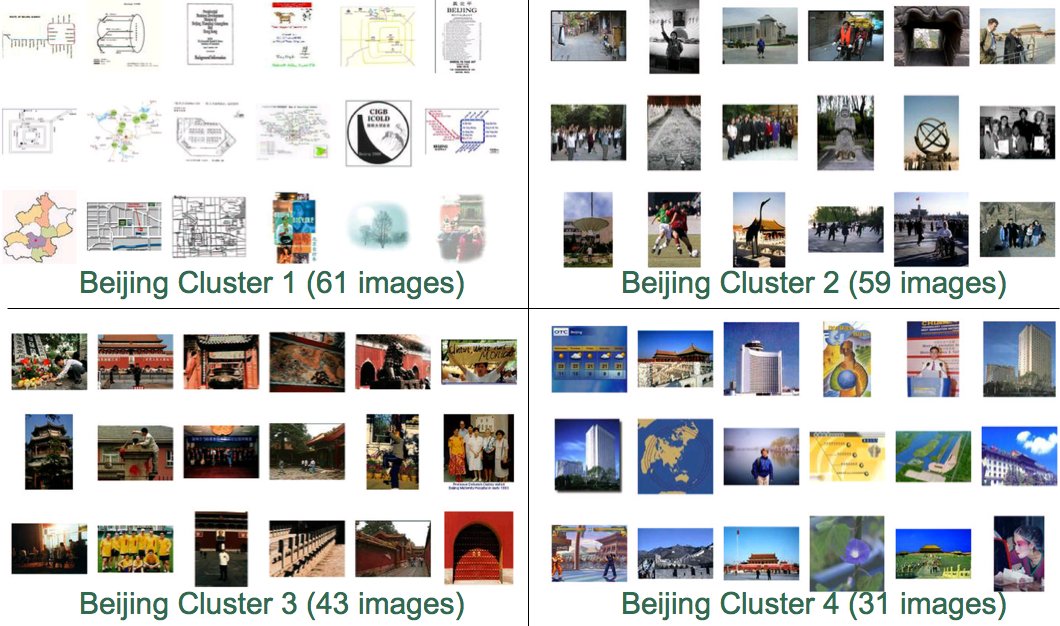Projects > Media Annotation > Cluster-based Image Retrieval

CLUE: Cluster-based Image Retrieval
This page holds information about the CLUE project, as well as other work related to machine learning and region-based image retrieval, conducted by Yixin Chen. These include the UFM matching technique, image categorization by learning and reasoning with regions, and the MILES work.
Project Directors
The project was conducted by Yixin Chen (now on faculty of University of Mississippi) and James Z. Wang of The Pennsylvania State University.
Project Background
In a typical content-based image retrieval (CBIR) system, query results are a set of images sorted by feature similarities with respect to the query. However, images with high feature similarities to the query may be very different from the query in terms of semantics. This discrepancy between low-level features and high-level concepts is known as the semantic gap. This project introduces a novel image retrieval scheme, CLUster-based rEtrieval of images by unsupervised learning (CLUE), which attempts to tackle the semantic gap problem based on a hypothesis that images of the same semantics are similar in a way, images of different semantics are different in their own ways. CLUE attempts to capture semantic concepts by learning the way that images of the same semantics are similar and retrieving image clusters instead of a set of ordered images. Clustering in CLUE is dynamic. In particular, clusters formed depend on which images are retrieved in response to the query. Therefore, the clusters give the algorithm as well as the users semantic relevant clues as to where to navigate. CLUE is a general approach that can be combined with any real-valued symmetric similarity measure (metric or nonmetric). Thus it may be embedded in many current CBIR systems. We acknowledge NSF for the funding and equipment support.
Demonstration

Related Publications
- Yixin Chen, James Z. Wang and Robert Krovetz ``CLUE: Cluster-based Retrieval of Images by Unsupervised Learning,''IEEE Transactions on Image Processing, vol. 14, no. 8, pp. 1187-1201, 2005.[An abstract was published in Proc. IEEE International Symposium on Signal Processing and its Applications, 2003] (download) (citations)
- Yixin Chen and James Z. Wang, ``A Region-Based Fuzzy Feature Matching Approach to Content-Based Image Retrieval,'' IEEE Transactions on Pattern Analysis and Machine Intelligence, vol. 24, no. 9, pp. 1252-1267, 2002. [An abstract was published in Proc. ACM Multimedia, 2001] (download) (citations)
- Yixin Chen and James Z. Wang, ``Image Categorization by Learning and Reasoning with Regions,'' Journal of Machine Learning Research, vol. 5, 913-939, August 2004. (download) (citations)
- Yixin Chen, Jinbo Bi and James Z. Wang, ``MILES: Multiple-Instance Learning via Embedded Instance Selection,'' IEEE Transactions on Pattern Analysis and Machine Intelligence, 2006, to appear. [An abstract was published in Proc. CVPR, 2005.](download) (citations)